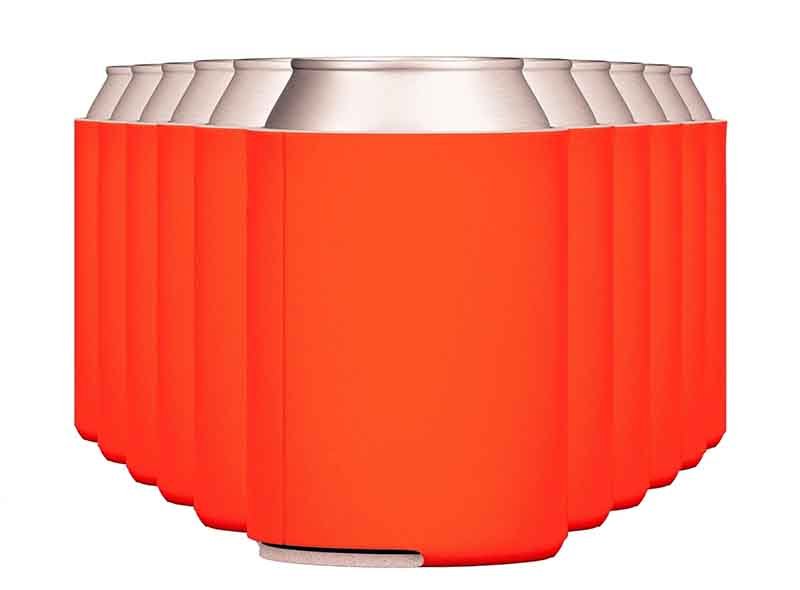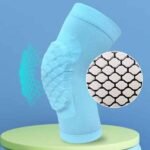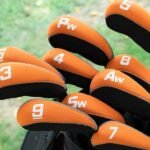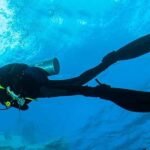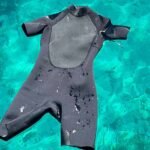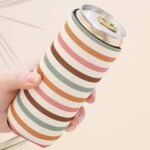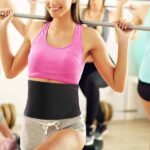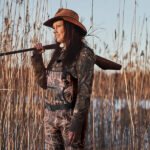Imagine unwrapping an ice-cold beverage on a sweltering day—your hand chills, but sweat still beads on the can, soaking through flimsy sleeves. Then you slip on a neoprene koozie: instant relief. Yet, behind that simple sip-saver lies a complex array of decisions: materials, machines, QC, customization, pricing—and sustainability. Choosing the right factory determines whether your custom koozies keep drinks cold, look great, and arrive on time.
Selecting a bespoke neoprene koozie factory hinges on five essentials: premium closed-cell neoprene (2–5 mm) for insulation, advanced cutting and printing equipment, rigorous quality control (ISO 9001, SGS, ASTM tests), extensive customization (printing, Pantone matching, shapes), and transparent MOQ/pricing with reliable lead times. By assessing these factors—plus optional eco-friendly materials—you’ll secure high-performance, brand-enhancing koozies without surprises.
But let me tell you about Jake, the Oregon microbrewery owner. Last summer, at his flagship outdoor festival, he handed out cheap, thin neoprene sleeves that tore by midday, their prints faded. Attendees took photos, posting complaints on social media. Jake’s brand reputation took a hit. Determined to avoid a repeat, he dug into factory capabilities: material grades, machine specs, QC certifications, eco-friendly options, and sample policies. He found a partner who delivered durable, vibrant koozies—complete with foldable designs and custom carabiner loops—just in time for this year’s event. By the end of this guide, you’ll have Jake’s know-how to avoid costly mistakes and elevate your next batch.
What Materials and Thicknesses Should You Look for in Custom Neoprene Koozies?
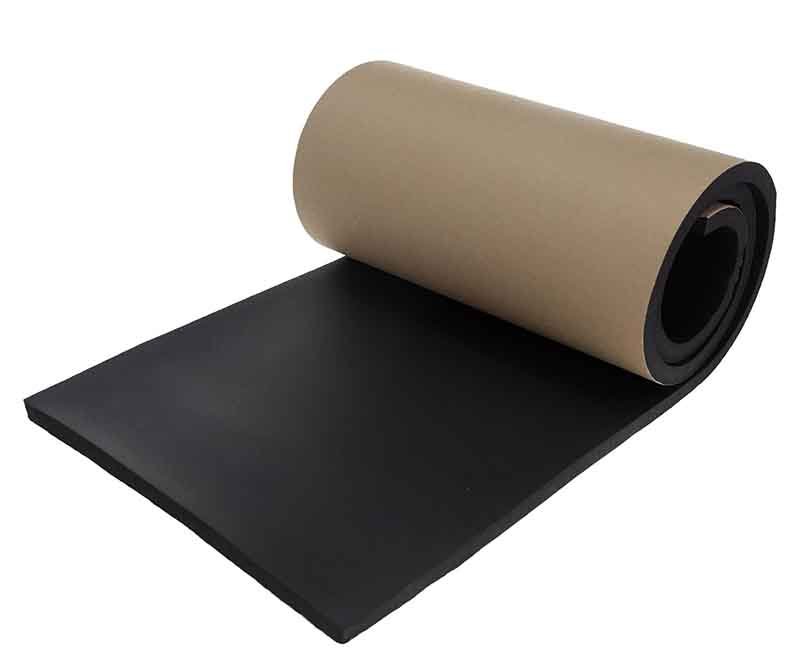
High-quality neoprene koozies use closed-cell neoprene (2 mm–5 mm), which traps air in tiny pockets for superior insulation and moisture resistance. A 3 mm thickness balances performance and cost, maintaining cold temperatures for 45 minutes. Opt for fabric laminates (polyester, nylon) to enhance print quality and durability. Material consistency across batches prevents performance variability and protects your brand reputation.
- Closed-Cell vs. Open-Cell Neoprene
- Closed-Cell (SBR/CR grades): Sealed gas pockets prevent water absorption and maximize insulation.
- Open-Cell: Absorbs moisture, offers poor thermal retention—unsuitable for drink sleeves.
- Thickness Impact on Insulation and Durability
- 2 mm Neoprene (Budget-Friendly):
- Insulation ~30 minutes, lightweight, suitable for mild climates or short events.
- Unit Cost: $0.60–$0.80 (bulk).
- Durability: Moderate (durability rating 3/5).
- 3 mm Neoprene (Popular Mid-Range):
- Insulation ~45 minutes, balanced weight and cost.
- Unit Cost: $0.80–$1.20.
- Durability: 4/5.
- 4 mm–5 mm Neoprene (Premium):
- Insulation ~55–60 minutes, extra cushioning, higher material cost.
- Unit Cost: $1.20–$2.00.
- Durability: 4.5–5/5.
- 2 mm Neoprene (Budget-Friendly):
- Fabric Coverings: Quality, Printability, Durability
- Polyester Laminate:
- Smooth matte finish; ideal for dye-sublimation—vibrant, fade-resistant prints.
- Excellent abrasion resistance; minimal pilling.
- Nylon Covering:
- Slight sheen, stronger abrasion resistance.
- Best for screen printing or UV digital prints; may reduce stretch slightly.
- Raw Neoprene (Uncovered):
- Prints via UV or discharge methods; colors can be muted.
- Good for simple, single-color designs; less versatile for complex logos.
- Polyester Laminate:
- Specialty Neoprene Blends: Eco & Performance
- Dope-Dyed Neoprene:
- Color integrated into raw polymer; uses 90% less water, lower chemical discharge.
- Superior colorfastness—resists scratching and fading.
- Limestone-Based (Geoprene™) Neoprene:
- Up to 90% petroleum replacement by limestone; 30–40% lower CO₂ emissions.
- Comparable tensile strength and compression performance; +10–15% cost premium.
- Recycled Neoprene (GRS Certified):
- Factory scraps shredded and reblended; 30–50% recycled content.
- Tensile strength ~1300–1400 psi; suitable for standard koozies.
- +8–12% cost due to sorting/processing.
- Dope-Dyed Neoprene:
- Ensuring Material Consistency
- Request Material Safety Data Sheets (MSDS) specifying density, tensile, compression.
- Conduct First Article Inspections on actual production batch to confirm thickness, texture.
- Ensure the factory performs in-house lab tests (ASTM D412, D624, D395) regularly—request test reports.
Which Production Capabilities and Equipment Are Essential for High-Quality Bespoke Koozies?

A top-tier neoprene koozie factory has precision die-cut or water-jet cutting machines, industrial heat presses (15 bar, up to 200 °C), and professional sewing (flatlock, overlock) lines. Automated cutting ensures uniform shapes; dye-sublimation or UV digital printing delivers vibrant, consistent logos. In-house prototyping and CAD-driven mockups speed approval cycles, while a balance of automation and skilled hand-finishing sustains premium quality.
- Cutting Methods: Die-Cutting vs. Water-Jet
- Die-Cutting:
- Advantages: Fast for large volumes; clean, uniform edges.
- Drawbacks: Requires a custom die per shape; tooling cost $200–$500.
- Water-Jet Cutting:
- Advantages: No tooling needed—ideal for prototypes/small runs; smooth edges without heat distortion.
- Drawbacks: Higher per-unit cost for large volumes; edges may need drying.
- Insight: For orders >10,000 units of a single shape, die-cutting reduces per-unit cost by ~15–20%. For flexible designs or multiple variants under 5,000 units, water-jet is more cost-effective.
- Die-Cutting:
- Heat Press and Lamination Systems
- Industrial Heat Presses:
- Specs: 15 bar pressure, digital control, 0–200 °C.
- Ensures dye-sublimated inks fully embed, producing fade-resistant prints.
- Lamination Tunnels:
- Apply protective PVC/TPU over prints, boosting water and abrasion resistance.
- Ideal for outdoor event koozies; prevents print peeling even when wet.
- Industrial Heat Presses:
- Sewing and Overlock Machines: Seam Integrity
- Flatlock Stitch Machines:
- Creates flat, comfortable seams—avoids discomfort from bulky seams against hands.
- Stitch density ≥6 stitches/inch prevents unraveling under stretch.
- Overlock (Serger) Machines:
- Prevents fraying, adds stretch strength.
- Use UV-stabilized nylon or polyester threads to avoid degradation under sun exposure.
- Example: An outdoor retailer tested flatlock vs. basic zig-zag seams. Flatlock lasted 200,000+ stretch cycles; zig-zag frayed after 50,000.
- Flatlock Stitch Machines:
- In-House Prototyping and Rapid Sampling
- CAD-Driven Sample Cutting:
- Creates instant mock-ups from digital files, reducing back-and-forth.
- Proofing Prints:
- Photos under standardized lighting ensure color accuracy before bulk.
- Critical Thought: Too few QC steps on rush samples can spike defect rates. Always confirm prototypes match specs before approving bulk orders.
- CAD-Driven Sample Cutting:
- Balancing Automation and Handcraft
- Automated Lines:
- High throughput (50,000+ units/month), consistent quality, lower labor per unit.
- Limited in intricate custom touches.
- Hand-Finishing:
- Ideal for leather accents, embroidered patches, or hand-painted details.
- Example: A luxury winery combined die-cut and printed bodies with hand-cut leather tags—cost +25%, but customers paid a 40% premium for artisan feel.
- Automated Lines:
- Factory Capacity Tiers
- Low-Volume (1,000–5,000 units/month): Manual cutting, basic presses, 15–25 day lead times.
- Mid-Volume (5,000–50,000 units/month): Die-cut machines, industrial presses, 10–20 day lead times.
- High-Volume (50,000+ units/month): Fully automated lines, high-tech printing, 5–15 day lead times.
How Do You Verify Quality Control Standards and Certifications?
Seek factories with ISO 9001 certification and SGS or Bureau Veritas audits. In-house tests (ASTM D412 tensile, D624 tear, D395 compression, D1056 water absorption) ensure performance. Check batch traceability, random sampling protocols, and third-party lab results. Transparent QC processes—documented manuals, inspection logs, and calibration records—minimize defects and protect your brand’s integrity.
- Essential Certifications for Neoprene Koosies
- ISO 9001 (Quality Management):
- Verifies a systematic QMS—reduces production variability.
- Confirm certificate validity and scope (product lines covered).
- SGS or Bureau Veritas Audits:
- Third-party inspections validate compliance with international standards (ASTM tests, process controls).
- REACH (EU) & RoHS:
- Ensure no harmful chemicals (heavy metals, phthalates) leach from neoprene.
- Critical if selling to EU/NA; non-compliance can lead to customs holds or fines.
- ISO 9001 (Quality Management):
- Key In-House Tests
- ASTM D412 (Tensile Strength & Elongation):
- Samples stretched until break; targets ≥1400 psi tensile and >300% elongation.
- ASTM D624 (Tear Resistance):
- Measures force required to propagate a tear; aim for 20–35 kN/m (3–5 mm neoprene).
- ASTM D395 (Compression Set):
- Evaluates neoprene’s recovery after compression; an ideal rating is <15% at 70 °C for 22 hours.
- ASTM D1056 (Water Absorption):
- Ensures <10% weight gain after 24 hours immersion; prevents sogginess and odor.
- ASTM D412 (Tensile Strength & Elongation):
- Auditing a Factory’s QC Processes
- Review QC Manuals:
- Should detail incoming material checks, in-process inspections, final inspections, acceptance criteria, and corrective actions.
- Red Flag: Vague or missing QC procedures.
- On-Site (or Virtual) Inspections:
- Observe cleanliness, organization (5S practices), lighting, and workspace safety.
- Check random sampling frequency—e.g., every 50th unit measured for thickness, print alignment, stitch uniformity.
- Batch Traceability:
- Ensure each production batch has a lot number linked to raw material certifications, production date, and QC results.
- Facilitates root-cause analysis if defects arise post-shipment.
- Third-Party Lab Verification:
- Send random samples to accredited labs (TÜV Rheinland, Intertek) for accelerated aging tests (UV exposure, salt spray) to simulate long-term outdoor use.
- Review QC Manuals:
- Common QC Pitfalls
- Inconsistent Thickness:
- Even 0.2 mm deviation affects insulation. Use digital calipers at multiple points.
- Color Variations:
- Dye-lot differences cause mismatched palettes. Factories should use spectrophotometers to maintain ΔE < 2.0.
- Uneven Stitch Tension:
- Excessively tight stitches cause puckering; too loose cause popped seams. Random pull tests ensure seam strength ≥15 lbf.
- Adhesive Glue Failure (Bonded Seams):
- Test by cycling samples: freeze at –20 °C for 2 hours, then soak in 40 °C water for 1 hour. Adhesion should remain intact.
- Inconsistent Thickness:
- Certifications’ Impact on Brand & Liability
- Liability Protection:
- Documented compliance reduces legal exposure if products cause irritation or environmental harm.
- Brand Trust:
- Displaying “ISO 9001 certified” or “SGS tested” builds credibility; 68% of retailers prefer certified suppliers.
- Market Access:
- Required for EU/NA markets; prevents customs rejections or fines.
- Liability Protection:
What Customization Options Should a Private-Label Neoprene Koozie Supplier Provide?
Top factories offer various printing methods—dye-sublimation, screen, UV digital—plus precise Pantone color matching, embossing/debossing, custom shapes (finger grooves, zippers), low-MOQ sample runs, and accessory integration (carabiners, keyrings). Premium finishes (foil stamping, contrasting overlock stitching) elevate perceived value. Robust design support (AI mockups, 3D renders) and flexible sample policies minimize risk and bring your vision to life.

- Printing Methods Comparison
- Dye-Sublimation:
- Pros: Ink bonds into polyester-coated neoprene; vivid, photorealistic prints; excellent fade resistance.
- Cons: Requires laminate or coated neoprene; higher cost than screen printing.
- Screen Printing:
- Pros: Cost-effective for 1–3 color logos; ink sits on surface, creating a tactile feel.
- Cons: Not ideal for complex images or gradients; each color adds $0.10–$0.20.
- UV Digital Printing:
- Pros: Direct-on-neoprene printing; quick drying; good for short runs and multi-color designs.
- Cons: Ink adhesion weaker than sublimation—requires protective coating for outdoor use.
- Heat Transfer Vinyl (HTV):
- Pros: Offers premium finishes (matte/glossy); good for limited runs and specialty logos.
- Cons: Prone to peeling if base material isn’t prepped; best for small, high-value batches.
- Dye-Sublimation:
- Pantone Color Matching & Brand Consistency
- Factories use spectrophotometers to match Pantone chips; provide physical swatches for your approval.
- Example: A fitness brand ordered 2,000 lime-green sleeves. Initial sample skewed yellow-green; after two Pantone-verified revisions, the final matched PMS 375—preventing costly reprints.
- Custom Shapes & Structural Enhancements
- Ergonomic Finger Grooves:
- Adds comfort; a sports brand saw a 30% increase in repeat sales when customers noted better grip.
- Zipper or Velcro Closures:
- Enables accommodating larger bottles (e.g., wine).
- Accessory Integration:
- Carabiner Loops: Clip to backpacks or belts—popular for festivals and hiking.
- Keychain Rings/Bottle Openers: Multi-functional; ideal for corporate giveaways.
- Foldable/Roll-Up Designs:
- Collapsible for easy storage; 42% of Millennials prefer them for portability.
- Ergonomic Finger Grooves:
- Low-MOQ Sample Policies: Reducing Risk
- Common Sample MOQs: 50–200 units.
- Sample Costs vs. Bulk: Sample Qty Cost/Unit (USD) Bulk (1,000+) Cost/Unit (USD) Notes 50 $3.50 n/a Includes prototyping fees 100 $2.80 n/a Simple design, UV or heat transfer 1,000 $1.50 $1.00 Transition to die-cut & sublimation 10,000 $1.00 $0.80 Full volume discount
- Tip: Use pilot runs to gather feedback. A 200-unit test can reveal color or fit issues before a 5,000-unit commitment.
- Premium Finishes to Differentiate Your Brand
- Edge Binding/Contrast Overlock:
- Contrasting thread (e.g., black sleeve, neon-green stitch) creates a sporty, custom look.
- Embossing/Debossing:
- Press logos into leather/silicone patches and attach them. Elevates perceived value.
- Foil Stamping:
- Metallic gold/silver foil prints stand out at events; ideal for limited editions.
- Example: A luxury winery’s foil-stamped koozies became keepsakes—guests paid a premium, boosting revenue.
- Edge Binding/Contrast Overlock:
- Design Support & Virtual Mockups
- In-House Graphic Designers:
- Optimize your vector artwork for neoprene’s texture—ensuring crisp edges and accurate colors.
- 3D Digital Renderings:
- See how your logo wraps around a cylindrical shape, where seams align, and finger grooves interact with branding.
- Case Study: A beverage startup saved 10% on prototyping by approving digital mockups first; only one physical sample was needed before mass production.
- In-House Graphic Designers:
How Are Minimum Order Quantities, Pricing, and Lead Times Determined?
MOQs (500–5,000 units) reflect setup costs (dies, screens), material procurement (neoprene rolls), and labor overhead. Tiered pricing starts around $1.20/unit (1,000–4,999) down to $0.75 (20,000+). Factor in print complexity (each extra color +$0.10–$0.20), packaging upgrades ($0.15–$0.50), and shipping terms (FOB vs. DDP). Standard lead times range 10–20 days; rush orders (5–10 days) cost +10–20%.
- MOQ Drivers: Cost, Material, and Labor
- Tooling & Setup Fees:
- Die tooling ($200–$500); screen printing screens ($50–$100/screen). Spread across MOQ to amortize.
- Material Procurement:
- Neoprene arrives in 1,000 m rolls; setting MOQ prevents scrap.
- Labor & Overhead:
- Each order requires production planning, QC setup, packaging prep—prompting MOQs that justify administrative effort.
- Example: A factory might offer 1,000-unit MOQ for a single-color print but require 3,000 units for multi-color dye-sublimation.
- Tooling & Setup Fees:
- Tiered Pricing Structures Order Qty Base Price (1-color) +Additional Color Custom Packaging (per unit) Lead Time (Days) 1,000–4,999 $1.20 +$0.15 $0.20 15–20 5,000–9,999 $1.00 +$0.12 $0.18 12–18 10,000–19,999 $0.85 +$0.10 $0.15 10–15 20,000+ $0.75 +$0.08 $0.12 8–12
- Complexity Add-Ons:
- Multi-color prints add $0.10–$0.20/color.
- Specialty finishes (foil, embossing): $0.25–$0.50/unit.
- Complexity Add-Ons:
- Lead Time Breakdown
- Material Prep (3–4 days): Cutting neoprene rolls, laminating coverings.
- Printing & Finishing (4–6 days): Includes proof revisions and heat pressing.
- Sewing & Assembly (3–5 days): Stitching, edge binding, QC.
- Packaging & Shipping Prep (2–3 days): Polybagging, boxing, labeling.
- Total: 10–20 days (mid-volume).
- Seasonal Peaks:
- Major holidays (Memorial Day, July 4th) can push standard lead times from 15 to 25+ days. Plan early.
- Negotiating Flexibility
- Bundled SKUs:
- Combine two color variants (e.g., 500 black + 500 navy) to meet a 1,000-unit MOQ.
- Payment Terms:
- 30% deposit, 70% upon inspection—standard; reduces upfront stress.
- Blanket Orders:
- Commit to an annual volume (e.g., 30,000 units over 3 shipments); lock in pricing and flexibility on designs per batch.
- Sample Fee Waivers:
- Many factories reimburse prototype fees ($100–$200) if you order within 30–60 days.
- Bundled SKUs:
- Uncovering Hidden Costs
- Artwork Setup Fees: $30–$70 per design file; more if artwork needs vectorizing or complex separations.
- Color Changeover Fees: $50–$100 per screen/cart on multi-design production runs.
- Export & Customs:
- FOB: Buyer handles customs ($100–$200).
- DDP: Factory covers duties/documentation for a surcharge (+$0.10–$0.20/unit).
- Rework Charges:
- If defects stem from client-supplied errors (e.g., low-res artwork), rework fees are $0.10–$0.25/unit.
- Factory should cover defects from their end.
Are Sustainable or Eco-Friendly Neoprene Options Available?

Yes—factories now offer limestone-based (Geoprene™), dope-dyed, and recycled neoprene. Geoprene™ cuts CO₂ emissions by 30–40%; dope-dyeing uses 90% less water; recycled neoprene (GRS-certified) repurposes factory scraps. Though costs rise 5–15%, eco-friendly koozies attract conscious consumers and justify premium pricing. Look for OEKO-TEX, GRS, or Cradle to Cradle certifications to validate claims.
- Geoprene™ (Limestone-Based Neoprene)
- Production & Composition:
- Replaces up to 90% petroleum content with locally sourced limestone.
- Environmental Benefits:
- –40% CO₂ emissions vs. petroleum-based neoprene; lower VOCs during production.
- Performance Metrics:
- Tensile Strength: 1500–1700 psi (vs. 1600–1800 for standard).
- Compression Set: 10–12% at 70 °C (vs. 12–14%).
- Thermal Conductivity: ~0.052 W/mK (comparable).
- Cost Premium: +10–15%.
- Production & Composition:
- Dope-Dyed Neoprene
- Process & Impact:
- Pigments mixed into raw polymer pre-extrusion; eliminates post-production dye baths—90% less water usage, fewer chemical discharges.
- Colorfastness:
- Inherent color resists fading and scratching; ideal for high-traffic outdoor use.
- Cost Implications:
- +5–10% unit cost but long-term water and energy savings offset price.
- Market Insight: A European outdoor apparel retailer saw a 12% revenue boost after switching to dope-dyed neoprene koozies, catering to eco-conscious buyers.
- Process & Impact:
- Recycled Neoprene (GRS Certified)
- Composition:
- 30–50% post-consumer or factory scrap neoprene blended with virgin neoprene.
- Quality Considerations:
- Slightly lower tensile (1300–1400 psi), still suitable for everyday koozies.
- Potential for minor surface inconsistencies (granule remnant), but can be smoothed in lamination.
- Cost Premium:
- +8–12% due to sorting and processing.
- Certification:
- Look for Global Recycled Standard (GRS) labels to ensure genuine recycled content.
- Use Case: A sustainable fashion brand’s “Zero-Waste Koozies” used GRS neoprene; marketing emphasized 20 g of neoprene scrap per unit was diverted from landfills. Web traffic rose 18% within two weeks of launch.
- Composition:
- Key Sustainability Certifications Certification Focus Area Audit Frequency Annual Cost (USD) OEKO-TEX Standard 100 Chemical Safety (no harmful substances) Annual $1,200–$2,000 Global Recycled Standard Recycled Content & Social Responsibility Annual $2,000–$3,500 Cradle to Cradle Certified™ Material Health & Circularity Every 2–3 years $5,000–$10,000 (varies)
- Marketing Eco-Friendly Koozies
- Storytelling:
- Use infographics or short videos showing reduced water usage (dope-dye) and carbon savings (Geoprene™).
- Certification Badges:
- Prominently display OEKO-TEX, GRS, or Cradle to Cradle logos on product pages and marketing collaterals. Nielsen 2023 reported 66% of consumers would pay more for sustainable products.
- Pricing Justification & Transparency:
- Example: “Our GRS neoprene koozie costs $1.20 vs. $1.00 standard. For an extra $0.20, you save 20 g of neoprene scrap from landfill and reduce carbon emissions by 15%.”
- Cause Partnerships:
- Pledge a portion of proceeds to ocean cleanup or reforestation. Such collaborations can drive a 10–20% uplift in eco-focused segments.
- Storytelling:
How Can You Assess Customer Support, Sample Policies, and After-Sales Service?

Evaluate factories based on prompt, multilingual support (12–24 hr response), clear sample policies (50–200 units, prototype fee rebate on bulk orders), and robust after-sales warranties (3–6 months defect coverage). Prioritize partners offering virtual factory tours, third-party inspections, design assistance, and drop-shipping/3PL integration. Transparent communication, quick issue resolution, and proactive reorder reminders minimize risk and strengthen long-term partnerships.
- Responsive Customer Support
- Service-Level Agreements (SLAs):
- Top factories commit to 12–24 hr replies on general queries and 3–6 hr on production or QC issues.
- Multilingual Teams:
- English fluency is mandatory; Mandarin, Spanish, German speakers improve global communication.
- Communication Channels:
- Email, WeChat, WhatsApp, and platforms like Alibaba’s TradeMessenger facilitate real-time problem-solving.
- Case in Point: A New York distro flagged incorrect logos mid-production; the Szoneier account manager responded in 4 hrs, provided corrected mockups, and salvaged the entire shipment.
- Service-Level Agreements (SLAs):
- Sample Policies & Rapid Prototyping
- Free vs. Paid Samples:
- Prototype fees ($50–$150) often refunded if you confirm a bulk order (≥1,000 units) within 30–60 days.
- Lead Times:
- Simple Designs (≤2 print colors, 3 mm neoprene): 5–7 days.
- Complex Designs (≤4 colors, specialty finishes): 10–14 days.
- Revision Rounds:
- Factories generally allow 2–3 proof revisions; extra rounds: $20–$50 each.
- Digital Mockups:
- 3D renderings can accelerate feedback, saving days of shipping time. Only one physical sample needed after digital approval.
- Free vs. Paid Samples:
- After-Sales Service & Warranties
- Defect Coverage Window:
- Standard 3–6 months post-delivery. Covers delamination, print fading, seam failures (excludes normal wear).
- Return & Rework Logistics:
- Factory arranges return shipping of defects and reworks at no charge if fault lies with production.
- Continuous Improvement Reporting:
- Quarterly defect analysis reports shared with clients; proactive recommendations (e.g., reinforcing certain seams or adjusting adhesive types).
- Case Study: A Canadian outdoor brand found 1.5% of a 1,200-unit order had minor zipper misalignments. They filed a warranty claim—48 hrs later, root cause (cutting angle) was identified, and replacements arrived 10 days later at no cost.
- Defect Coverage Window:
- Value-Added Services
- Design Assistance & Artwork Optimization:
- Factories with Adobe Illustrator expertise refine low-res logos—saving designer fees.
- Drop-Shipping & Fulfillment:
- Direct-to-consumer or distributor drop-shipping; factory splits orders into multiple delivery addresses with unique labels.
- Inventory Monitoring & Reorder Alerts:
- Some partners integrate 3PL warehouses, sending auto-notifications when your stock falls below a preset threshold.
- Co-Packing & Bundling:
- Combine koozies with branded sunglasses or BBQ tools into gift sets; factory sources, assembles, and labels kits—streamlining logistics.
- Design Assistance & Artwork Optimization:
- Remote & Third-Party Factory Audits
- Virtual Factory Tours:
- Request a guided video walkthrough: inspect cutting floors, printing stations, sewing lines, QC rooms. Evaluate workspace organization (5S), safety norms (PPE, fire extinguishers), and equipment condition.
- Third-Party Inspection Agents:
- Hire QIMA or SGS to conduct pre-shipment inspections, delivering detailed photos/videos and quality reports before shipping.
- Client References & Case Histories:
- Ask for 2–3 recent international client contacts. Inquire about on-time delivery rate, defect rates, communication efficiency, and handling of issues. A transparent factory will gladly share.
- Virtual Factory Tours:
How Are Minimum Order Quantities, Pricing, and Lead Times Determined?
MOQs (500–5,000) offset tooling (die, screen) and material (1,000 m neoprene rolls) costs. Tiered pricing: $1.20/unit (1,000–4,999), $1.00 (5,000–9,999), $0.75 (20,000+), with $0.10–$0.20/additional print color. Packaging adds $0.15–$0.50/unit. Standard lead times: 10–20 days; rush (5–10 days) adds 10–20% surcharge. Negotiate bundled SKUs, deposit splits (30/70), and sample refees to optimize costs.
- MOQ Drivers: Tooling, Material, Labor
- Tooling & Setup Fees:
- Die tooling ($200–$500), screen printing ($50–$100 per screen).
- Material Procurement:
- Neoprene arrives in 1,000 m rolls—MOQs align with roll yields to minimize waste.
- Labor Overhead:
- Each new order entails planning, QC, packaging—prompting higher MOQs to justify admin time.
- Tooling & Setup Fees:
- Tiered Pricing and Cost Components Order Qty Base Price (1-color) +Add’l Color Packaging (per unit) Lead Time (Days) 1,000–4,999 $1.20 +$0.15 $0.20 15–20 5,000–9,999 $1.00 +$0.12 $0.18 12–18 10,000–19,999 $0.85 +$0.10 $0.15 10–15 20,000+ $0.75 +$0.08 $0.12 8–12
- Complexity Add-Ons:
- Distinct dies or screens for each color; each additional print color +$0.10–$0.20.
- Specialty finishes (foil, emboss): +$0.25–$0.50.
- Complexity Add-Ons:
- Lead Time Composition
- Material Prep: 3–4 days (cutting rolls, lamination).
- Printing & Finishing: 4–6 days (proofs, heat press).
- Assembly: 3–5 days (stitching, QC).
- Packaging: 2–3 days (bagging, boxing, labeling).
- Total: 10–20 days (mid-volume).
- Negotiating MOQs & Payment
- Bundled SKUs: Combine color variants (e.g., 500 black + 500 navy) to meet 1,000-unit MOQ.
- Payment Splits: 30% deposit, 70% before shipping—standard; eases cash flow.
- Blanket Agreements: Commit to 30,000 units/year across 3 shipments for locked-in pricing and design flexibility.
- Sample Fee Refunds: Prototype fees ($100–$200) often refunded if bulk order placed within 30–60 days.
- Hidden Costs & Fees
- Artwork Setup: $30–$70 per file; more if extensive vectorizing required.
- Color Changeovers: Screen cleaning fees ($50–$100 per color change) on multi-design runs.
- Export & Customs:
- FOB: Buyer handles duties/customs ($100–$200).
- DDP: Factory includes duties/documentation for +$0.10–$0.20/unit.
- Rework: Defects due to client artwork errors cost $0.10–$0.25/unit for reprinting/reworking.
Are Sustainable or Eco-Friendly Neoprene Options Available?
Factories now supply Geoprene™ (limestone-based), dope-dyed, and recycled neoprene. Geoprene™ reduces CO₂ by 30–40%; dope-dyeing cuts water use by 90%; recycled neoprene (GRS-certified) reuses scraps. Costs rise 5–15%, but eco-options attract conscious consumers. Look for OEKO-TEX, GRS, or Cradle to Cradle certifications to validate claims and justify a premium price.
- Geoprene™ (Limestone-Based) Benefits
- Environmental Impact: –40% CO₂ emissions vs. petroleum-based.
- Performance: Tensile 1500–1700 psi; compression set 10–12%; insulation ~0.052 W/mK.
- Cost Premium: +10–15%.
- Example: A solar company’s Earth Day koozies drove social engagement by highlighting carbon savings.
- Dope-Dyed Neoprene
- Water Savings: –90% water usage vs. post-production dyeing.
- Colorfastness: Superior fade resistance; fewer wastewater issues.
- Cost: +5–10%.
- Insight: An outdoor apparel brand saw a 12% sales bump after adopting dope-dyed koozies.
- Recycled Neoprene (GRS Certified)
- Composition: 30–50% post-consumer or factory scrap.
- Tensile: ~1300–1400 psi (suitable for everyday use).
- Cost: +8–12%.
- Use Case: “Zero-Waste Koozies” improved a sustainable fashion brand’s website traffic by 18%.
- Key Certifications Certification Focus Audit Frequency Cost (USD) OEKO-TEX Standard 100 Chemical Safety Annual $1,200–$2,000 Global Recycled Standard Recycled Content & Social Practices Annual $2,000–$3,500 Cradle to Cradle Certified™ Material Health & Circularity Every 2–3 years $5,000–$10,000
- Marketing Eco-Friendly Koozies
- Storytelling & Transparency:
- Share infographics on water and carbon savings.
- Certification Badges:
- Display OEKO-TEX, GRS, or Cradle to Cradle logos prominently.
- Pricing Narrative:
- “Eco Variant: $1.20 vs. Standard: $1.00—your $0.20 funds water conservation and landfill reduction.”
- Cause Partnerships:
- Donate 5% to ocean cleanup—boosts CSR and drives a 10–20% sales uplift in eco segments.
- Storytelling & Transparency:
How Can You Assess Customer Support, Sample Policies, and After-Sales Service?
Top factories provide SLAs (12–24 hr response), multilingual support, 50–200 unit sample MOQs (refundable upon bulk), 3–6 month defect warranties, and 3PL/drop-shipping services. Virtual tours, third-party inspections, and quarterly defect reports ensure transparency. Design assistance (AI mockups), co-packing, and automated reorder alerts strengthen partnerships and prevent stockouts.
- Service Responsiveness & Communication
- SLAs:
- General inquiries: 12–24 hr response.
- Production/QC issues: 3–6 hr.
- Multilingual Support: English mandatory; Mandarin, Spanish, German desirable.
- Channels: Email, WeChat, WhatsApp, Alibaba’s TradeMessenger.
- SLAs:
- Sample Policies & Prototyping
- MOQ & Fees:
- 50–200 units; $50–$150 sample fee—refundable if bulk (≥1,000) within 30–60 days.
- Lead Times:
- Simple designs: 5–7 days.
- Complex designs: 10–14 days.
- Digital Mockups:
- 3D renderings expedite approvals; only one physical sample is needed post-digital sign-off.
- MOQ & Fees:
- After-Sales Warranties & Support
- Warranty Period: 3–6 months post-delivery—covers production defects (delamination, seam failures, print issues).
- Return & Rework Logistics:
- Factory arranges return shipping; reworks or replaces at no charge if fault is theirs.
- Continuous Improvement Reports:
- Quarterly defect analyses with root-cause insights and recommendations for design tweaks.
- Value-Added Services
- Design Assistance:
- In-house Illustrator experts refine artwork to ensure crisp prints on neoprene’s texture.
- Drop-Shipping/3PL Integration:
- Direct-to-consumer shipments or multi-address distributor drop-ships reduce logistics complexity.
- Inventory & Reorder Alerts:
- Integration with 3PL warehouses triggers reorder notifications when stock dips below thresholds.
- Co-Packing & Bundling:
- Combine koozies with sunglasses or bottle openers; factory sources and assembles kits, handling multiple SKUs.
- Design Assistance:
- Remote/Third-Party Audits
- Virtual Factory Walkthroughs:
- Guided video inspections of cutting floors, printing stations, sewing lines, and QC rooms. Evaluate 5S organization, safety protocols, and equipment condition.
- Third-Party Inspectors (QIMA, SGS):
- Provide photo/video reports and detailed QC scores before shipment.
- Client References & Case Histories:
- Request 2–3 recent global clients; ask about on-time delivery rates, defect percentages, and communication efficiency.
- Virtual Factory Walkthroughs:
How Are Minimum Order Quantities, Pricing, and Lead Times Determined?
MOQs (500–5,000) reflect tooling and material costs. Tiered pricing: $1.20/unit (1,000–4,999), $1.00 (5,000–9,999), $0.75 (20,000+); print colors add $0.10–$0.20 each. Packaging and accessories cost $0.15–$0.50/unit. Lead times: 10–20 days (mid-volume), rush (5–10 days) adds 10–20%. Negotiate bundled SKUs, 30/70 payment splits, and sample fee refunds to streamline budgets.
- MOQ & Tooling Costs
- Die tooling ($200–$500); screen prints ($50–$100/screen) amortized across MOQ.
- Neoprene rolls (1,000 m) prompt MOQs aligned with roll usage.
- Admin and QC overhead justify minimums.
- Tiered Pricing Order Qty Base Price +Each Extra Color Packaging Cost Lead Time 1k–4,999 $1.20 +$0.15 $0.20 15–20 days 5k–9,999 $1.00 +$0.12 $0.18 12–18 days 10k–19,999 $0.85 +$0.10 $0.15 10–15 days 20k+ $0.75 +$0.08 $0.12 8–12 days Note: Multi-color prints and specialty finishes (foil, emboss) add $0.25–$0.50.
- Lead Time Components
- Material Prep: 3–4 days
- Printing & Finishing: 4–6 days
- Sewing & Assembly: 3–5 days
- Packaging: 2–3 days
- Negotiation Tactics
- Bundle SKUs to meet MOQ (e.g., 500 black + 500 navy).
- 30/70 payment splits; prototype fees refundable with bulk order within 30–60 days.
- Blanket volume commitments (e.g., 30k units/year) secure pricing and design flexibility.
- Hidden Costs
- Artwork Setup: $30–$70 per file.
- Color Change may incur $50–$100 per screen/cartridge.
- Export/Customs:
- FOB: Buyer manages duties ($100–$200).
- DDP: Factory covers for +$0.10–$0.20/unit.
- Rework: $0.10–$0.25/unit if client-supplied errors cause defects.
Conclusion
Navigating the world of bespoke neoprene koozie manufacturing requires attention to five key factors:
- Materials & Thickness (2 mm–5 mm closed-cell neoprene, fabric laminates)
- Production Equipment (die-cutting, heat presses, sewing machines)
- Quality Control & Certifications (ISO 9001, SGS, ASTM tests)
- Customization Options (printing methods, Pantone matching, shapes, accessories)
- MOQ/Pricing/Lead Times (tiered pricing, sample policies, rush fees)
Plus, exploring sustainable materials (Geoprene™, dope-dyed, recycled) appeals to eco-conscious markets. Ensure responsive customer support, robust after-sales service, and third-party audits to safeguard your brand image.
At Szoneier, with 18+ years of neoprene R&D, manufacturing, and customized service, we handle everything: premium closed-cell neoprene, diverse printing techniques, eco-friendly options, flexible MOQs (≥200), fast sampling (5–7 days), low lead times (10–15 days), and 100% quality assurance. Our dedicated design team provides virtual mockups, and our account managers ensure on-time communication and smooth logistics—drop-shipping or bulk shipping, whichever you need.
Ready to elevate your brand with top-tier neoprene koozies?
Request a free design consultation now, and get rapid prototype samples with no risk. Let’s create koozies that chill drinks, showcase your logo in vivid detail, and leave lasting impressions—without the stress.

